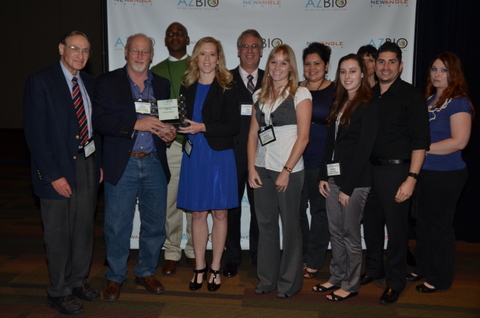September is designated as National Childhood Cancer Awareness Month. The federal health observance provides an opportunity to heighten awareness of the formidable public health challenges presented by childhood cancer. According to the National Cancer Institute, cancer is the leading cause of death by disease in children and adolescents ages 1 to 19 years old in the United States.
Pediatric patients with blood cancers have diseased blood-forming cells. For some patients, a hematopoietic stem cell transplant is their best treatment option. Hematopoietic stem cells are the building blocks of the body’s blood and immune system. Umbilical cord blood is a rich source of hematopoietic stem cells that can be used for transplantation in treating childhood cancer. During the last 25 years, cord blood stem cells have been used in more than 30,000 transplants performed worldwide in the treatment of more than 80 diseases and disorders in both adults and children, such as acute and chronic leukemia.
Before a cord blood transplant can be performed, the donor’s stem cells must be matched to the recipient. Siblings of the same biological parents have a 25 percent chance of being a perfect match and a 50 percent chance of being a partial match. For families with a history of disorders that are treatable by cord blood stem cells, having access to a sibling’s cord blood could make a difference. Family cord blood banks can serve an important role in efforts to treat various forms of childhood cancer.
After extensive research on the topic, the McCullough family decided to bank their children’s cord blood with Cord Blood Registry® (CBR®). The McCullough’s eldest child, Sami, was diagnosed with acute myeloid leukemia (AML) at the age of 2. Sami underwent a hematopoietic stem cell transplant using cells from her younger sister Molly’s banked cord blood. Today, Sami is cancer-free and recently celebrated her 9th birthday. The McCulloughs believe their decision to bank Molly’s cord blood helped Sami beat leukemia. The family strives to help educate expectant parents about the lifesaving power of cord blood.
CBR recognizes how valuable having access to a related source of cord blood stem cells can be for families affected by certain childhood cancers. For families that have been identified with a qualifying medical condition currently treatable with a cord blood stem cell transplant, CBR’s Newborn Possibilities Program® provides no-cost newborn stem cell processing and five years of free storage. Through this program, CBR has provided 28 families affected by childhood cancer with access to their cord blood units for treatment.
About Cord Blood Registry
Cord Blood Registry® (CBR®) is the world’s largest newborn stem cell company. Founded in 1992, CBR is entrusted by parents with storing more than 500,000 cord blood and cord tissue units. CBR is dedicated to advancing the clinical application of newborn stem cells by partnering with leading research institutions to establish FDA-regulated clinical trials, requiring CBR processed cord blood, for conditions that have no cure today. For more information, visit cordblood.com
SOURCE Cord Blood Registry

The Team from Cord Blood Registry celebrates being honored in 2012 as the Arizona Bioscience Company of the Year. CBR’s lab is located in Tucson, Arizona and is the largest private umbilical stem cell bank in the world. (Photo by Mark Goldstein of the International Research Center for AZBio)
